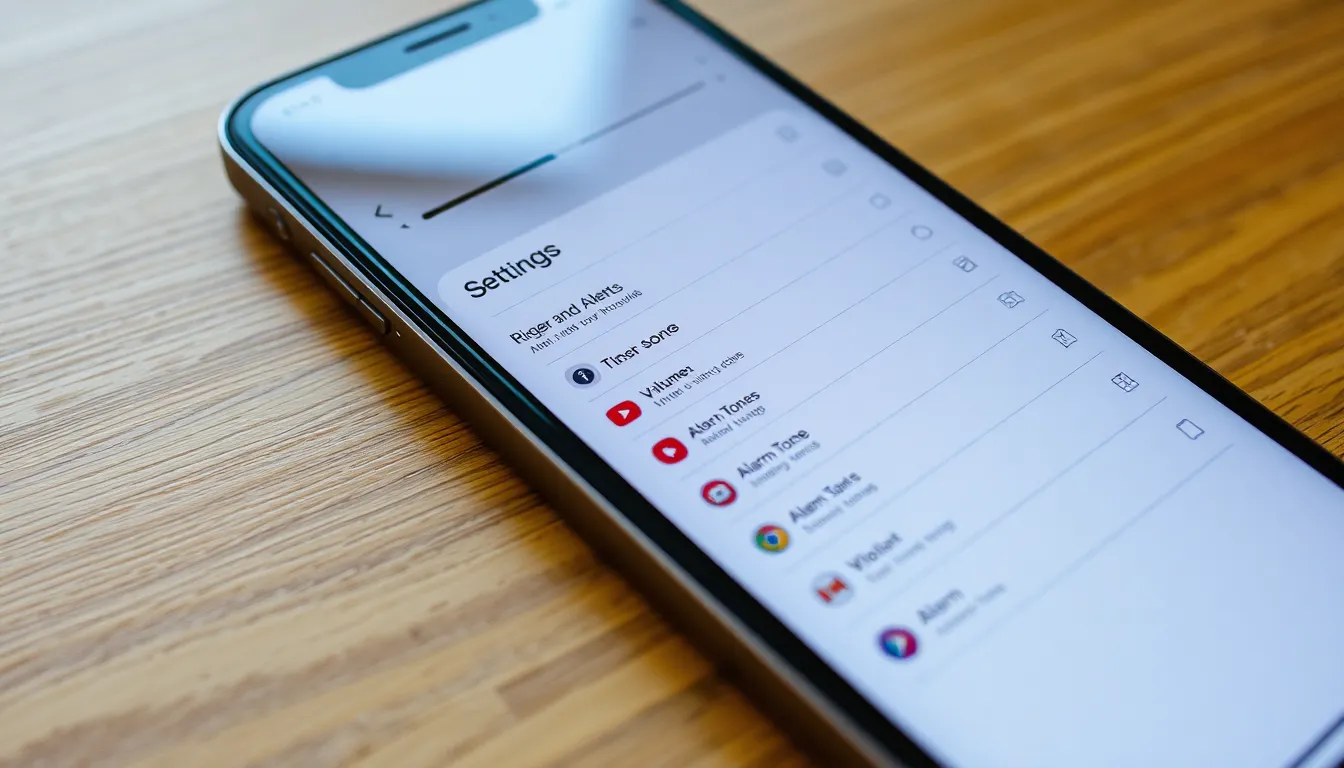Ever woken up to the sound of a whisper instead of a wake-up call? If your iPhone alarm sounds more like a gentle breeze than a blaring siren, you’re not alone. Many users find themselves scratching their heads, wondering why their alarms seem to have taken a vow of silence.
Table of Contents
ToggleCommon Reasons for Low Alarm Volume on iPhone
Many iPhone users experience low alarm volume, leading to disturbed mornings. This issue often stems from various sound settings and device features.
Sound Settings and Volume Levels
Alarms depend on specific sound settings. Check if the volume is turned down in the “Settings” app. Adjusting the “Ringer and Alerts” slider can significantly increase alarm sound. Users often overlook the “Change with Buttons” option, which allows volume adjustments using the physical buttons on the device. Notably, setting the alarm’s tone to a louder sound can enhance audibility. In some cases, users find the selected ringtone is inherently quiet, which impacts their waking experience.
Do Not Disturb Mode
Do Not Disturb mode can silently affect alarm volume. Typically, this mode silences notifications and calls, but alarms remain active. Some users mistakenly believe this feature mutes alarms altogether. Verifying that Do Not Disturb is not activated during the alarm time can resolve issues. Furthermore, adjusting the settings within this mode can ensure alarms ring loudly. Keeping the phone on while charging can also help eliminate unexpected quietness from alarms.
Troubleshooting Steps

This section outlines steps to diagnose and resolve low alarm volume issues on an iPhone.
Adjusting Alarm Volume
Check the volume settings for your alarm specifically. Users can find the “Ringer and Alerts” slider in the “Settings” app. It’s vital to ensure that this slider is turned up. Additionally, the “Change with Buttons” option needs to be toggled on, allowing volume changes using physical buttons. Sometimes, selecting a louder alarm tone makes a significant difference too. Alarm sound choices range from gentle tones to loud, attention-getting options.
Check Sound Settings
Accessing the sound settings in the “Settings” app is crucial. Ensure that the “Silent Mode” switch is not active; this often leads to muted alarms. Users should also check the “Do Not Disturb” settings, as this mode can silence alerts during designated times. Consider adjusting the scheduled times for Do Not Disturb to avoid conflicts with your alarm. A comprehensive check of all sound settings often reveals the root cause of low alarm volume.
Restarting Your iPhone
Restarting the iPhone can often rectify minor glitches causing alarm issues. Users should hold down the power button until the “slide to power off” option appears. Upon powering off, wait about 30 seconds, then turn the device back on. This simple reset refreshes system processes and might restore alarm functionality. Regularly restarting the phone also helps maintain optimal performance and address background issues.
Adjusting Alarm Settings
Adjusting alarm settings can significantly enhance the alert experience on an iPhone. Several users find that making a few changes to their settings resolves low alarm volume issues.
Selecting a Different Alarm Tone
Users can select a different alarm tone for more effectiveness. Various tones are available, ranging from soft melodies to more robust sounds. Stronger tones often feature louder volumes and can effectively awaken users. To change the tone, navigate to the Clock app, select the desired alarm, then choose “Sound” and browse through options. Make note that a unique tone can greatly assist in distinguishing it from other sounds.
Increasing Alarm Volume in Settings
Increasing alarm volume can resolve low sound levels. Start by opening the Settings app, then scroll to “Sounds & Haptics.” Here, the user should adjust the “Ringer and Alerts” slider to a higher setting. By enabling the “Change with Buttons” option, users can adjust the volume easily using the physical volume buttons. Ensure that the volume is adequate to effectively wake the user at alarm time.
Additional Tips for Better Alarm Functionality
Improving alarm functionality enhances the wake-up experience. Several tips can help users adjust and optimize their alarms effectively.
Using Third-Party Alarm Apps
Exploring third-party alarm apps offers additional features. Many apps provide customizable alarm sounds that range from soothing tones to loud alerts. Popular options include Alarmy and Timely, which boast unique functionalities like puzzle-solving or gradual volume increase. Users may appreciate the snooze options and added alarm settings these apps offer, ensuring they fit personal preferences. Downloading and testing different apps can lead to discovering the perfect alarm solution.
Ensuring Proper Device Maintenance
Device maintenance plays a significant role in alarm performance. Regular software updates enhance functionality and fix potential bugs. Clearing unnecessary apps and data can also optimize device performance, ensuring alarms operate smoothly. Moreover, checking for hardware issues, such as speaker malfunctions, prevents problems with alarm sound. Users should reset network settings if alarm-related issues persist, which can resolve underlying connectivity problems affecting alarm alerts.
Addressing low alarm volume on an iPhone can significantly enhance the user experience. By checking volume settings and adjusting alarm tones users can ensure they wake up on time without frustration. It’s essential to verify that Do Not Disturb mode isn’t interfering with alarms and to explore third-party apps for customized solutions. Regular device maintenance and software updates also play a crucial role in maintaining optimal performance. With these tips in mind users can confidently tackle alarm volume issues and enjoy a more reliable wake-up experience.




